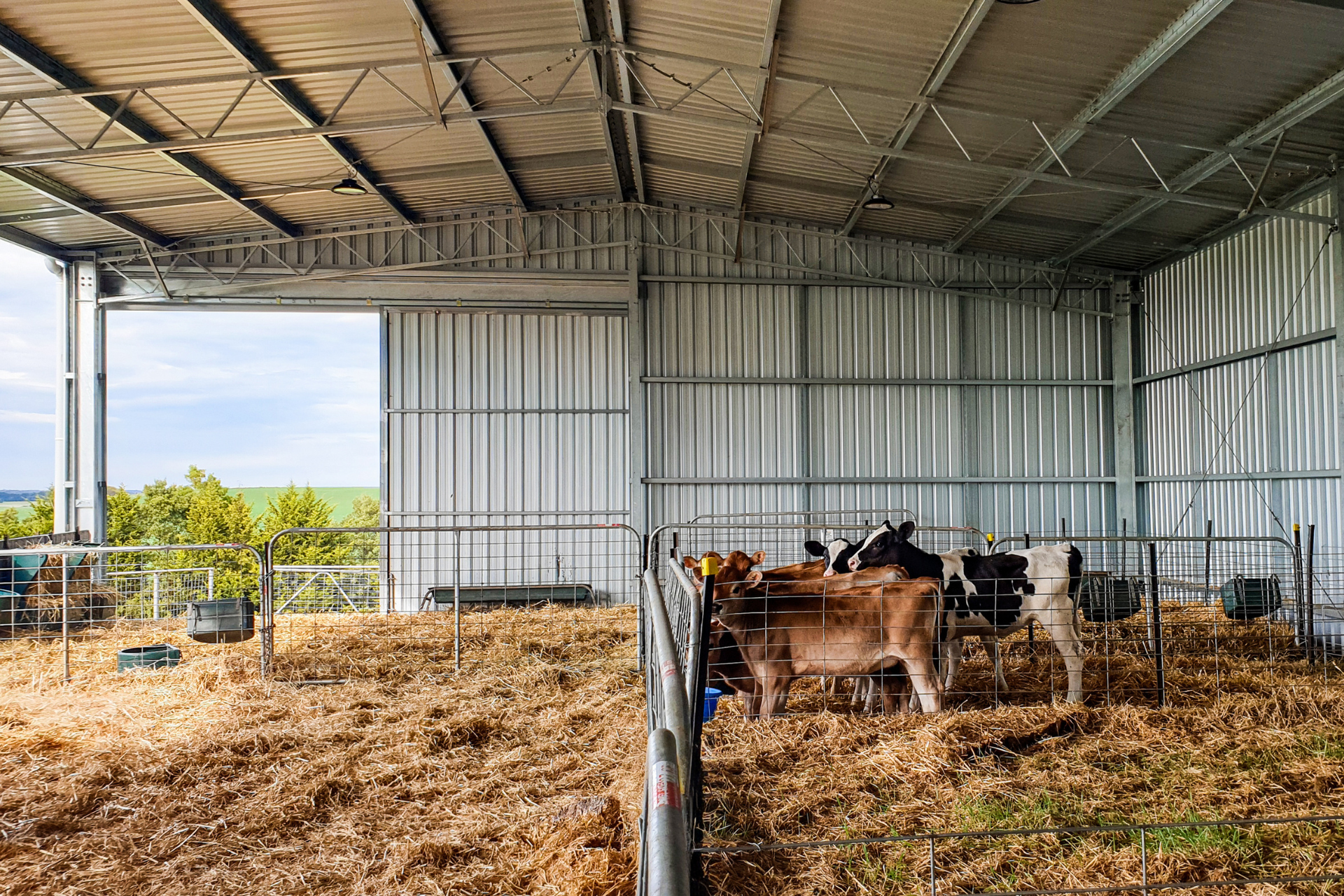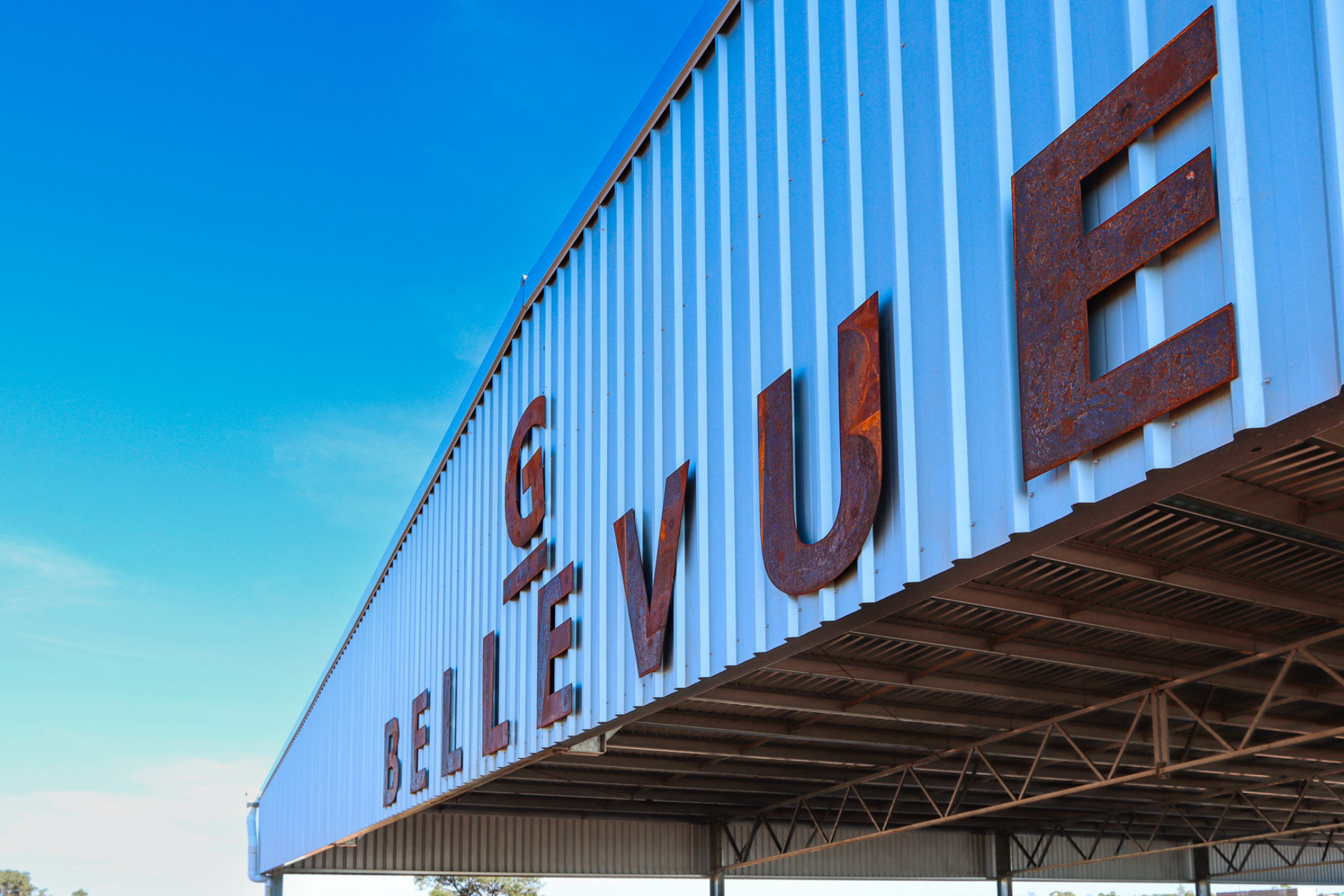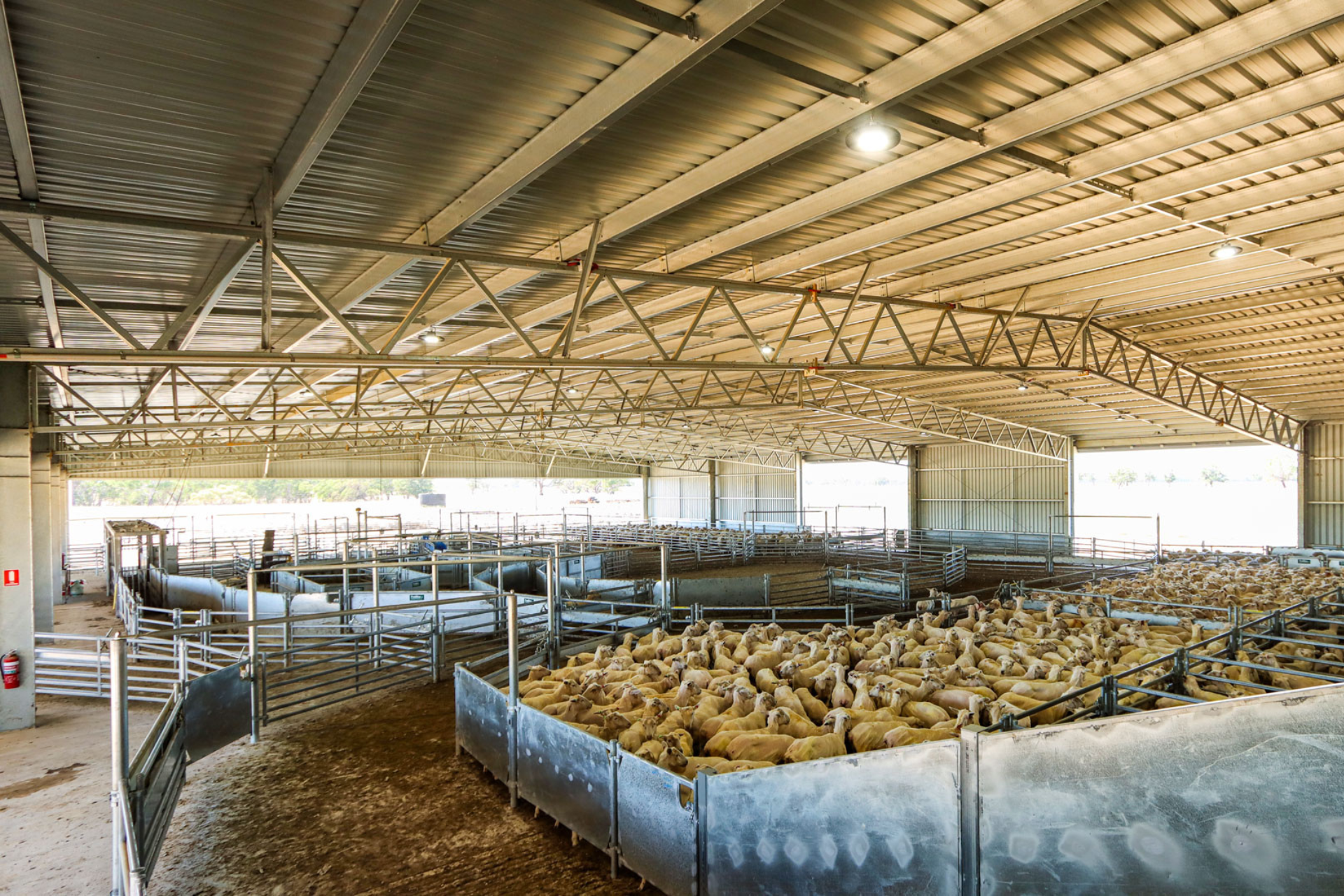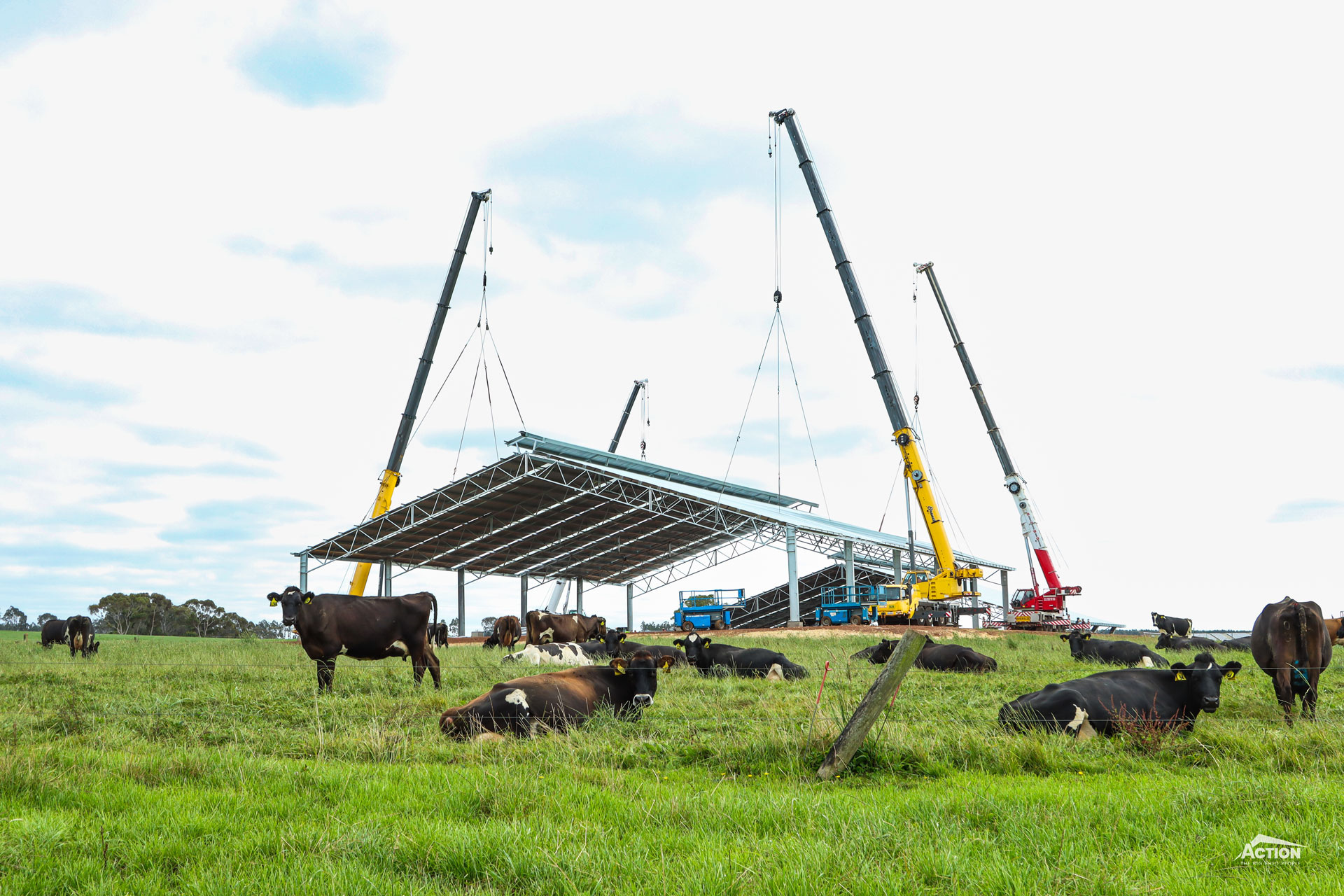Calf shed bedding – what is the best option?
One of the most important components of a good calf shed environment is the bedding material.
Choosing the right bedding material for your shed will directly impact animal comfort, health and performance.
One of the reasons for this is that research suggests that calves that spend more time lying down are better performers and it can impact future milk production. Good bedding material is a great way to encourage this behaviour.
The bedding will also help keep calves warm and make them less susceptible to disease and lower growth rates. This is the most economical way to keep calves healthy – prevention is always better than cure!
There are also operational benefits to choosing the right bedding for your calf shed. The correct bedding material can help reduce costs and labour.
So, what is the best calf shed bedding material?
In this article we discuss what properties are required for good calf shed bedding material, the different options available and the advantages and disadvantages of each.
What Is The Best Calf Shed Bedding Material?
The best calf shed bedding material is one that is conducive to animal comfort and suits your operational requirements.
It can be difficult to find an option that ticks all the boxes which is why it is important to prioritise your requirements.
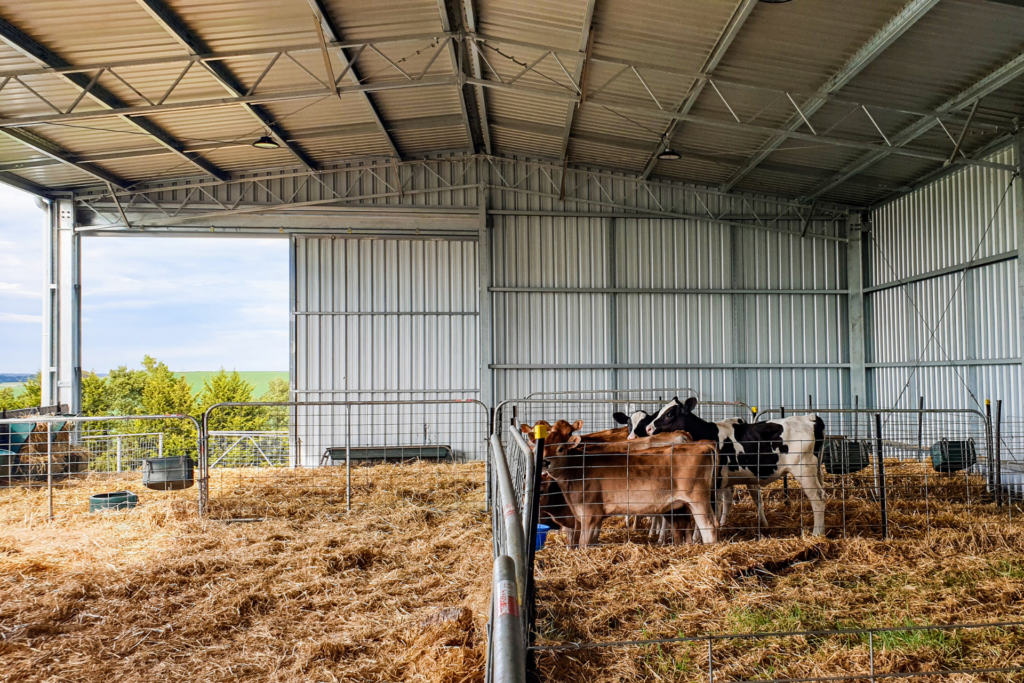
Here are some important points to keep in mind when choosing your calf shed bedding:
- Cost-efficiency. Is it affordable?
- Labour-efficiency. Does it need to be replenished regularly?
- Drainage. Does it absorb moisture? Or will the shed allow the moisture to drain away?
- Is it readily available?
- Are you also feeding the bedding material as a feed source? Is there a risk associated with the calves consuming the bedding?
- Sustainability. Is it biodegradable? What can the end product be used for? How is it disposed of?
- Insulation. Does it provide adequate insulation to keep calves warm?
Now, onto the options!
Calf Shed Bedding Options
Here is a summary of some of the available bedding materials, and the pros and cons of each option.
Straw
Straw is a good insulator. It is arguably the best option for keeping calves warm.
Straw is also really absorbent, and because it holds moisture so well it is a good idea to ensure there is plenty of fresh, dry straw available.
Moist bedding will breed bacteria, absorb ammonia and conduct heat away from the calves.
If straw is being used as feed or a source of fibre, avoid using it for bedding. This helps prevent calves from consuming contaminated bedding.
Bark or Wood Chips
One of the advantages of using bark or wood chips is that they aren’t a food source, and they aren’t very palatable to calves. This reduces the risk of calves being exposed to pathogens.
While not as good an insulator as straw, wood chips can still provide adequate warmth.
Wood Shavings
Wood shavings can be used for calf shed bedding provided they haven’t been treated. Treated wood shavings are toxic and there is the risk of calves consuming wood shavings.
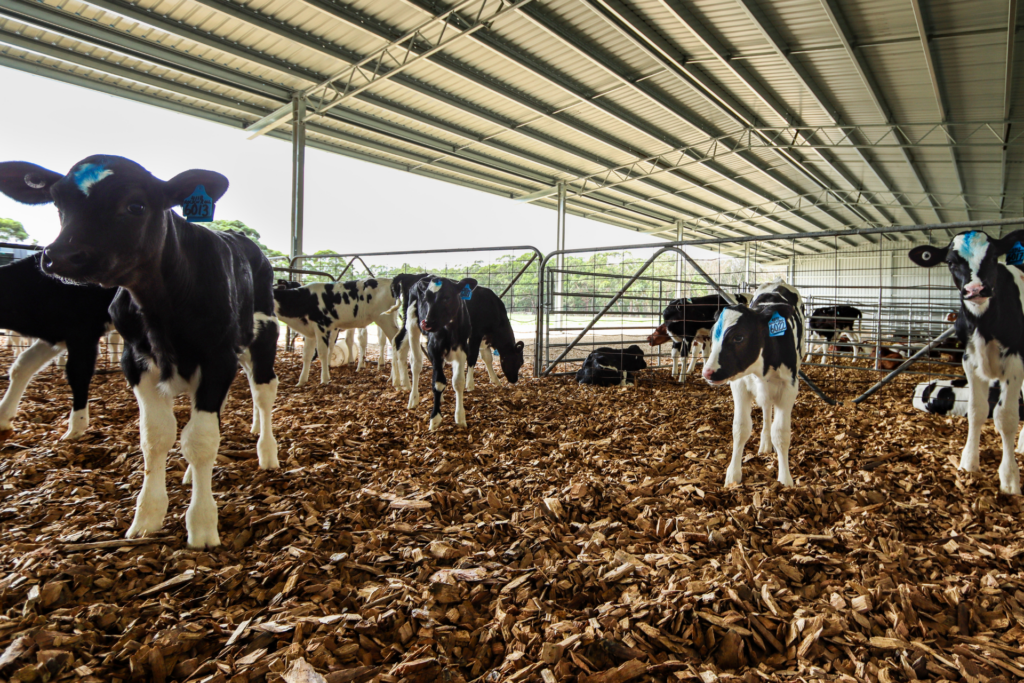
Sawdust
Sawdust is generally not recommended as calf shed bedding, primarily because it is so dusty. This can cause respiratory problems.
Sawdust also becomes sticky and wet.
Rice Hulls
Rice hulls are another common option for calf shed bedding and like wood chips or bark are a good insulator. CSIRO suggest using rice hulls on a concrete floor during the milk-rearing phase.
Sand
There is no real advantage to using sand in your calf shed. Sand will provide little insulation and it isn’t very absorbent.
Sand can also be a risk to calves if it’s consumed as it accumulates in the calf’s stomach.
Rubber Matting
Rubber matting cannot be used in isolation as flooring. This is because it is too cold and doesn’t encourage resting. It can also pose a risk of disease transfer if it is not regularly washed down.
The Verdict – Which Is Best?
Which is best?
As we have already discussed, the best calf shed bedding material will facilitate good animal health and comfort. It will also need to meet your operational requirements.
There are a few options to consider, and you may find that one option is better than the others. For example, if keeping your calves as warm as possible is your number one priority then straw will likely be the best option – unless it is also being fed to the calves as a source of fibre.
Alternatively, wood chips, bark or rice hulls also have good insulating properties and aren’t a food source, reducing the likelihood of calves consuming the bedding.
In summary, only use straw if it is not being used as a feed source and avoid using sawdust, sand, treated wood shavings and rubber matting. Bark, wood chips and rice hulls can all be safely used.
Regardless of the bedding that you choose, it is important to practice good bedding management and pen cleanliness. For example, replenish the bedding often to avoid bacteria growth, ammonia problems and to encourage calves to lie down. This is important for overall calf health and growth.
Ensure that there is enough bedding to allow calves to nestle deeply into the bedding.
It is also important that the shed itself has good drainage and is well maintained.
Useful Resources
- How To Your Calf Shed Clean
- What Is The Best Calf Shed Design?
- Can I Retrofit Concrete Panels To My Shed?
- Dairy Sheds & Infrastructure Guide (Brochure Download)
We hope this article has been helpful! For more articles like this check out the Learning Hub.

